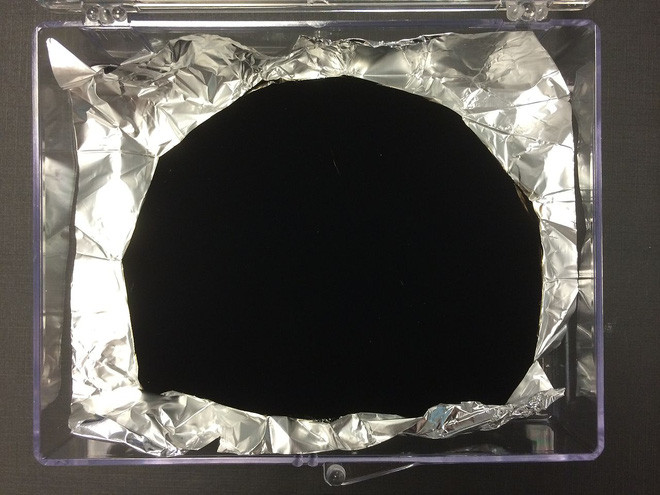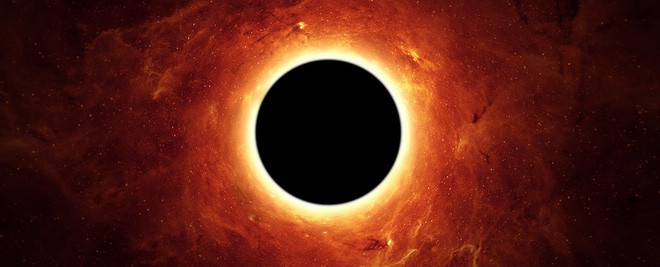Black force - a new force in the universe, becomes even more strange
A new study has expanded the understanding of the discovery of black forces, suggesting that the effect of radiation on particles around large objects can be magnified by the space surrounding them.
- 10 interesting facts about black holes in the universe (Part 1)
- 10 interesting facts about black holes in the universe (Part 2)
- Learn about black holes, white holes and deep holes
- What happens when the Earth falls into a black hole?
This finding could affect how we simulate the formation of stars and planets, and even help us discover a theoretical form of radiation that explains the black hole's death (flight black hole).
In 2013, physicists said that radiation emitted from so-called "black objects" could not only push small particles away, but could also pull them closer. Furthermore, for objects with enough heat and small masses, repulsive forces can be stronger than their gravitational forces.
If you have never encountered this term, the " black object " (absolute black or short object is black) is the object that absorbs visible light completely, they do not reflect or scatter the light. . Technically, black objects theoretically describe objects that are completely unresponsive to any light. Black objects emit radiation and make surrounding particles vibrate, which helps researchers describe the thermal properties of the object.
 Black force - a new force in the universe, becomes even more strange Picture 1
Black force - a new force in the universe, becomes even more strange Picture 1
An artificial black object.
Four years ago, a group of Australian researchers found that the radiation emitted from a black object had a very strange effect on nearby atoms.
To understand this effect, we need to know that atoms can move and change direction when the photons they absorb cause a momentum shift of the atom. In the right conditions, large objects like a cell can be pushed around by a beam of light - a phenomenon commonly used in a form of technology called optical tweezers .
Physicists have long known that electromagnetic radiation can alter the properties of nearby atoms through the Stark effect, which changes the position of electrons in atoms and places it in the state. lower energy state. This happens to make atoms tend to move forward, to brighter parts in a light beam.
Australian physicists have applied both of these insights, showing how not only can heat radiation push away particles, but also that they can pull particles toward objects (thanks to the Stark effect).
" The interaction between two forces - a gravitational force and a repulsive force due to radiation pressure - is often considered in quantum optics laboratories, but we have missed one thing, this phenomenon is also present with heat light source ", lead researcher Matthias Sonnleitner from Innsbruck University.
Although this force is very weak, they still show that the drag of the radiation can actually be greater than the gravity produced by small, hot masses, through particles smaller than dust.
" Particles less than 1 micron (1 micron equal to 1 / 1,000,000m) play a very important role in forming planets and stars or celestial bodies," Sonnleitner said. "Obviously, there are some questions in how they interact with hydrogen gas around or together. We are now investigating how this additional gravitational force affects activity. of atoms and dust. "
 Black force - a new force in the universe, becomes even more strange Picture 2
Black force - a new force in the universe, becomes even more strange Picture 2
Not long after that, another group of physicists approached the problems that Sonnleitner and his colleagues left behind. They are studying the effects of both the black body shape and its effects on the space-time curvature around this attraction and repulsion.
In particular, they calculated the curvature of space around a spherical black object and a cylindrical black object, and they also measured how the effects of different black matter radiation forces affected.
For spherical black objects, scientists have measured the curvature and the structure of the space around it, along with an exaggerated effect on gravity due to the effects of both gravity and angle. radiation affects the particles.
As for the case of a cylindrical black object, this does not happen, because it has plane and space around it, where the black effect is not exaggerated.
Although this effect will be undetectable in the laboratory or even solar-sized objects, for giant black objects like neutron stars, this effect can be created. be significantly different.
"We think that the enhancement of black forces due to super-dense sources can affect detectable phenomena related to them, such as the dispersal of super-energy particles and the formation of disks. small compensation around the black hole ", research leader Celio Muniz from Ceará State University, Brazil.
Follow genK.vn
You should read it
- Discover the most bizarre black holes in the mysterious space universe
- 10 interesting facts about black holes in the universe (Part 1)
- 10 interesting facts about black holes in the universe (Part 2)
- black hole, white hole, deep hole
- The streams of plasma sprayed from black holes can kill anything
- Discover a monster black hole 100,000 times bigger than the Sun, the second largest in the Milky Way
- The first 'wandering black hole' was discovered, 7 times as massive as the sun, and it took scientists 6 years to observe it
- This is a photograph of the first black hole of mankind, located in a galaxy 55 million light-years from Earth
- What happens when the Earth falls into a black hole?
- Hubble begins its hunt for hard-to-identify medium-sized black holes
- Astrophysics professor teaches how to jump into a black hole so it's 'safe' and possible events
- The discovery of a giant black hole, 70 times the mass of the Sun in the Milky Way, challenges every theory
May be interested

Interesting discoveries about asteroids in the solar system

What is gamma-ray burst?

NASA admits the spaceship was flying as fast as a bullet hit by UFOs

NASA announced its mission to fly directly to the Sun of a billion-dollar 'machine' in 2018

Discovering another 'super Earth' can appear to live only 21 light-years away

The distance from Earth to Jupiter - what is the largest planet of the solar system?






 10 interesting facts about black holes in the universe (Part 1)
10 interesting facts about black holes in the universe (Part 1) Discover the most bizarre black holes in the mysterious space universe
Discover the most bizarre black holes in the mysterious space universe A new discovery about the strange interaction between cosmic black holes and light
A new discovery about the strange interaction between cosmic black holes and light 10 interesting facts about black holes in the universe (Part 2)
10 interesting facts about black holes in the universe (Part 2) The newly discovered black hole contains anomalous characteristics, challenging most astronomical theories today
The newly discovered black hole contains anomalous characteristics, challenging most astronomical theories today Successfully creating cosmic black holes, demonstrating Hawking radiation exists
Successfully creating cosmic black holes, demonstrating Hawking radiation exists